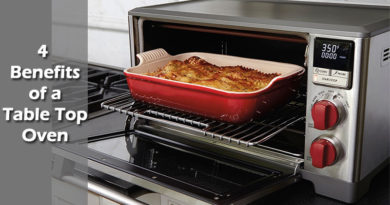What Can’t You Microwave?
Most everyone knows it’s a bad idea to put metal in the microwave — unless you want to see a glorious shower of sparks that perhaps lights your home on fire. However, the truth is that microwaves don’t mix with a number of other substances, which you might accidentally try to heat up. If you don’t want to suffer an explosion in your kitchen, read on to learn what substances you should never put in your microwave, and why.

Nothing
By far, the most important thing to never put in your microwave is nothing — that is, you should never run your microwave with nothing inside. Understanding why requires a quick lesson on how microwaves work:
Microwave ovens produce microwaves, which are short electromagnetic waves, similar to light, radio waves and x-rays. Microwaves can be used in communication, but because they cause water molecules to rapidly vibrate and heat up, microwaves are most commonly known for their use in food preparation. When you use your microwave to reheat your leftovers, a component called a magnetron emits microwaves, which bounce off the metal surfaces of the food compartment and get absorbed by your food. The water molecules in your food vibrate, heating up and becoming ready for consumption.
However, when there is nothing inside the oven to absorb the microwaves, the microwaves have nowhere to go but back into the magnetron. Contrary to some urban legends, this will not cause the microwave to explode, but it will severely damage the inner workings of the magnetron, making the microwave oven non-functional. If you do accidentally run your microwave empty, you might need to call for professional microwave repair — or buy a replacement microwave altogether.
Eggs in Shells
In the 1950s, when touring a laboratory experimenting with microwaves, American physicist Percy Spencer noticed that a candy bar in his pocket had suddenly melted. That’s how Spencer first discovered microwaves’ application in food preparation, and he confirmed his discovery with experiments with popcorn and, later, an exploding egg.
When Percy submitted a raw egg, in its shell, to microwaves, he found that the liquid inside the egg was super-heated and turned to steam, which caused the shell to fail catastrophically. In your microwave at home, you will find that a shelled egg will explode, either inside the microwave or after you take it out. Because you don’t want small, super-hot bits of shell flying into your face, you should crack all eggs before trying to cook them in your microwave — and you shouldn’t believe tips for hard-boiling eggs in your microwave.
Raw Fruits and Veggies
Only the worst chefs think to use the microwave to heat raw fruits and veg, so if you know your way around the kitchen, you might not realize that microwaving raw peppers, grapes, leafy greens and other fruits and veggies is a terrible idea, resulting in excessive sparking similar to how aluminum foil and silverware behave when microwaved.
This happens because raw fruits and vegetables are filled with minerals like iron, magnesium and selenium, which the body needs to function properly. Those minerals are essentially tiny pieces of metal, which attract and amplify the microwaves. The new intense electrical charge then beelines for more material to carry it, causing arcing and sparks. When fruits and veggies are spherical, like grapes and gooseberries, the microwaves can make them so hot that they produce plasma, a type of matter so hot that it glows. It’s safe to say that you shouldn’t microwave anything fresh and raw if you don’t want your home to burn down.
Paper Bags and Boxes
Some paper is made for use in microwaves. For example, the paper bags surrounding microwave popcorn and the cardboard surrounding your Hot Pocket are prepared with the knowledge that they will be subjected to microwaves, and extra care is put into ensuring those paper goods can withstand the heat and radiation.
However, that is not true of most paper. In fact, most paper and cardboard goods lack critical components called susceptors, which safely absorb microwaves. As a result, most paper will emit chemicals and toxic fumes when they are hit by microwaves. Worse, some paper goods might secretly contain metal elements, like foil designs, which will catch fire in your microwave oven. To be safe, you should avoid putting paper products in your microwave unless they are explicitly allowed to be there.
Plastic Bags and Containers
Finally, it is never a good idea to use plastic in the microwave. As with paper, most plastics contain toxins that will leach into your food when they are subjected to microwaves. Specifically, thinner plastics, like those used in bags and disposable containers, are produced with a compound called bisphenol A (BPA) and others called phthalates, and when you consume high quantities of these compounds, your likelihood of developing cancer skyrockets. The same is true for Styrofoam, which goes the extra mile to melt when subjected to heat, all but ensuring that nasty toxins enter your air and food. Though some plastics lack these compounds or are rated for microwave use, if you are at all concerned, you would do well to transfer your food to a microwave-safe ceramic container before blasting it.
Microwaves are convenient and essential kitchen appliances — but like other appliances, they have limitations. By understanding a bit about how microwaves work, you can avoid catastrophes that endanger your microwave, your food, your home and yourself.



